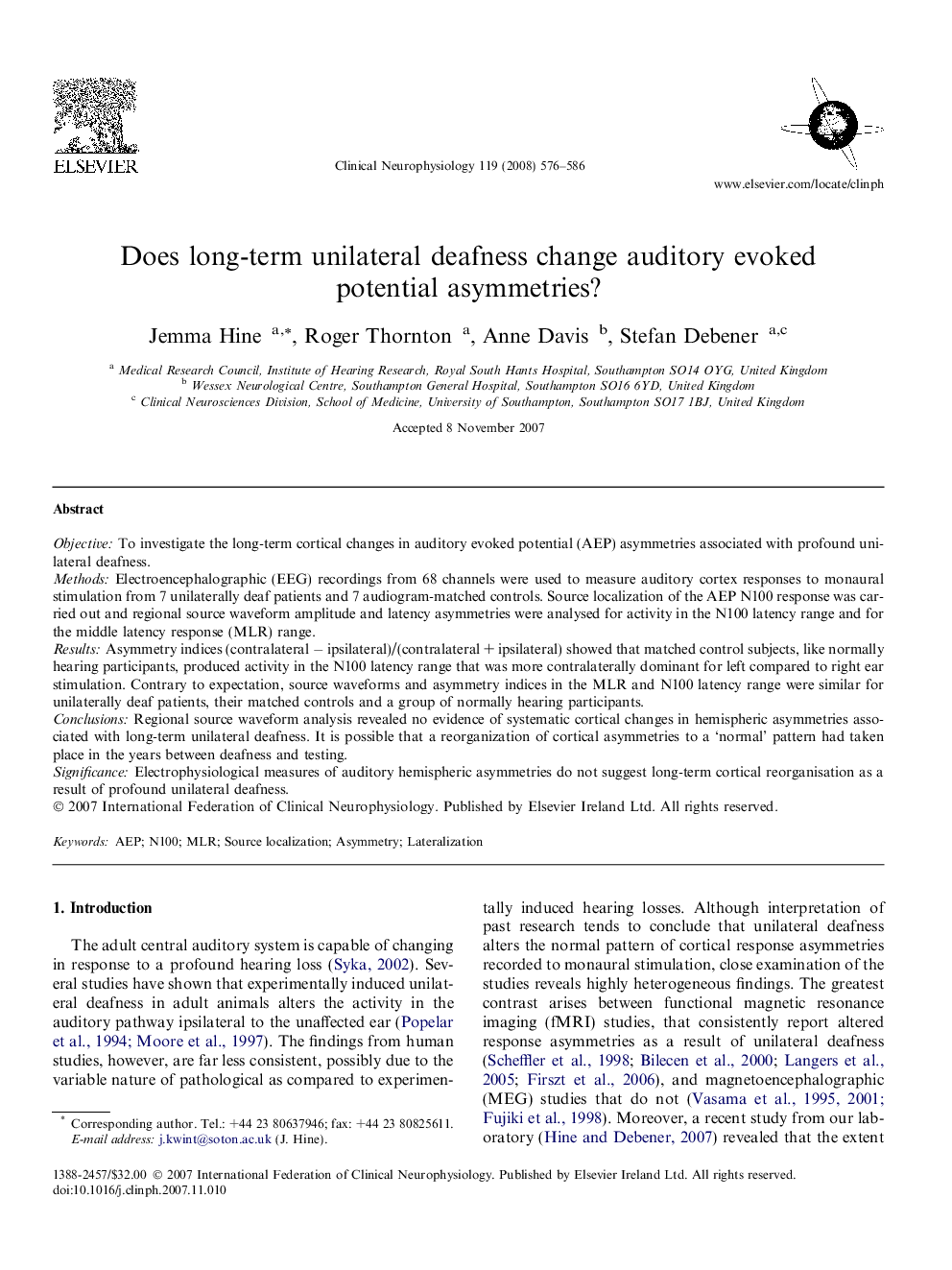| Article ID | Journal | Published Year | Pages | File Type |
|---|---|---|---|---|
| 3046592 | Clinical Neurophysiology | 2008 | 11 Pages |
ObjectiveTo investigate the long-term cortical changes in auditory evoked potential (AEP) asymmetries associated with profound unilateral deafness.MethodsElectroencephalographic (EEG) recordings from 68 channels were used to measure auditory cortex responses to monaural stimulation from 7 unilaterally deaf patients and 7 audiogram-matched controls. Source localization of the AEP N100 response was carried out and regional source waveform amplitude and latency asymmetries were analysed for activity in the N100 latency range and for the middle latency response (MLR) range.ResultsAsymmetry indices (contralateral − ipsilateral)/(contralateral + ipsilateral) showed that matched control subjects, like normally hearing participants, produced activity in the N100 latency range that was more contralaterally dominant for left compared to right ear stimulation. Contrary to expectation, source waveforms and asymmetry indices in the MLR and N100 latency range were similar for unilaterally deaf patients, their matched controls and a group of normally hearing participants.ConclusionsRegional source waveform analysis revealed no evidence of systematic cortical changes in hemispheric asymmetries associated with long-term unilateral deafness. It is possible that a reorganization of cortical asymmetries to a ‘normal’ pattern had taken place in the years between deafness and testing.SignificanceElectrophysiological measures of auditory hemispheric asymmetries do not suggest long-term cortical reorganisation as a result of profound unilateral deafness.
